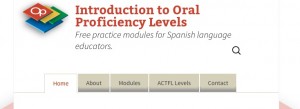 A new resource has become available to the Spanish teacher community and I really wanted you to know about it.
A new resource has become available to the Spanish teacher community and I really wanted you to know about it.
Last night’s #langchat was about how we can push our students from Novice Mid to Novice High in all three modes (for a summary, keep an eye on the Calico Spanish blog). Several participants expressed that they wanted to work more on distinguishing the proficiency levels. What a worthy endeavor! We’re all so busy – teachers are so busy – and so much is expected of us, but any amount of time at all that you can spend exploring proficiency levels will pay in dividends in your renewed focus in class and your students’ language development. I’m particularly grateful for resources like this: free, quality, organized, and available on my timetable, since I have not been able to attend an official ACTFL OPI workshop (when they’ve been offered here it’s prohibitive for me to find/pay for that much childcare or I’m presenting at the same time at a conference).
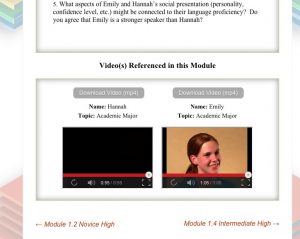 So what’s the resource? It’s a new group of websites from the University of Texas at Austin’s (same people who brought us those great proficiency exercises videos we all love to use) Center for Open Educational Resources and Language Learning. The Introduction to Oral Proficiency Levels will -quickly!- guide you through specific features of a given proficiency level, and then offers video examples of students performing at that level along with some type of guide, questions to help you figure out why the speaker was rated at that level.
So what’s the resource? It’s a new group of websites from the University of Texas at Austin’s (same people who brought us those great proficiency exercises videos we all love to use) Center for Open Educational Resources and Language Learning. The Introduction to Oral Proficiency Levels will -quickly!- guide you through specific features of a given proficiency level, and then offers video examples of students performing at that level along with some type of guide, questions to help you figure out why the speaker was rated at that level.
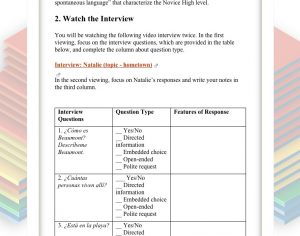 You’ll also want to check out the Spanish proficiency training website and learner corpus, where you can watch videos of students and rate them yourself, then check to see if you’re right.
You’ll also want to check out the Spanish proficiency training website and learner corpus, where you can watch videos of students and rate them yourself, then check to see if you’re right.
Snag a few minutes one morning before school, check out one video on one page, and see if you don’t learn a ton in those few minutes about how to evaluate your students’ performance more accurately, a practice which most importantly informs our students and informs our teaching. Good luck!
2 Comments
Comments are closed.
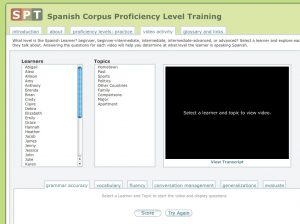
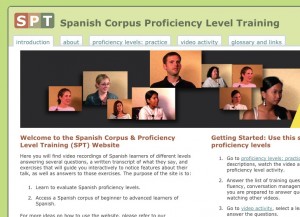




What a great resource! Thanks for sharing this!
This is great! Gracias!